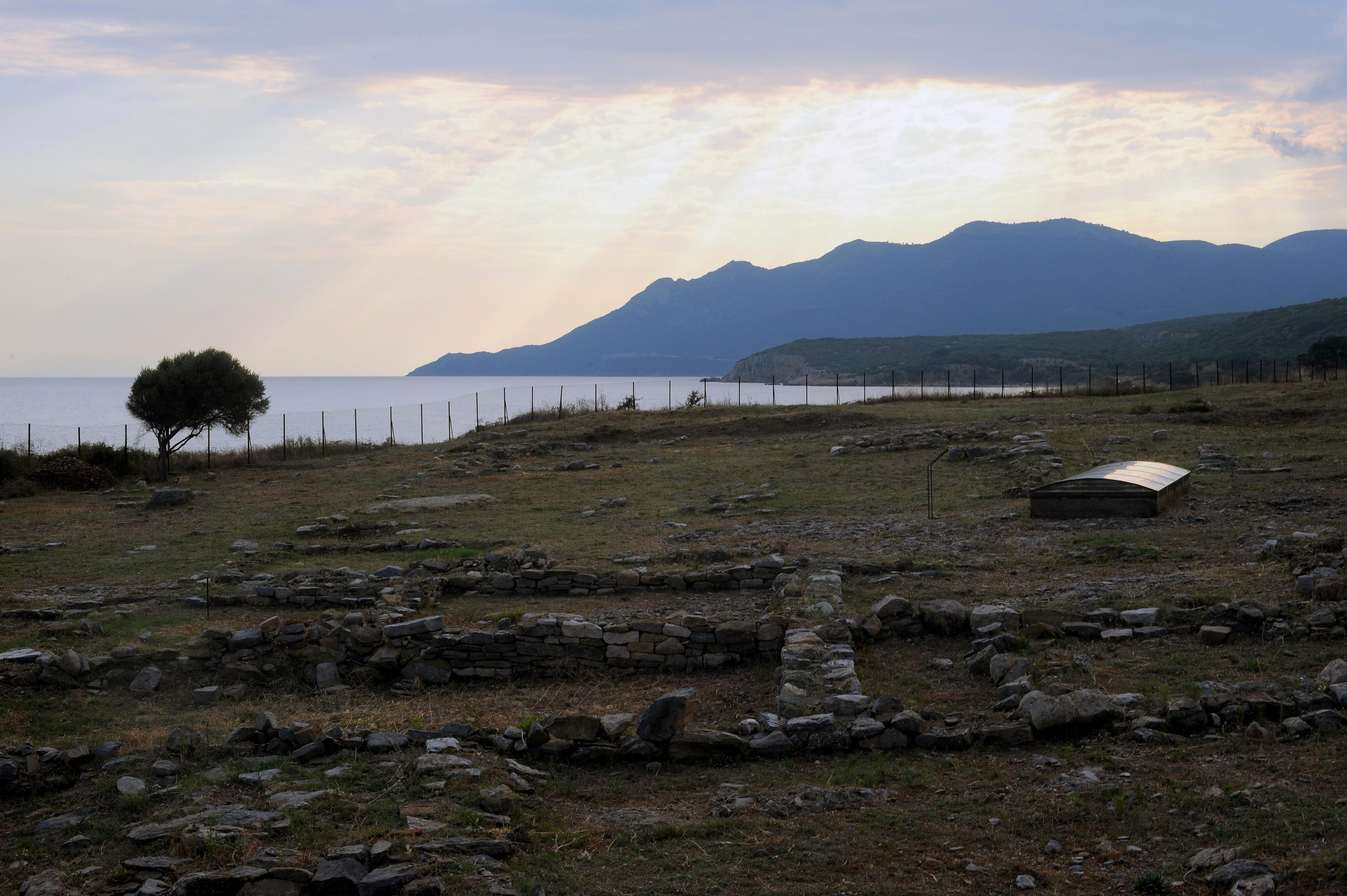Aegean Thrace is a landscape where coast, plain, and mountain come together, creating a setting that has heavily affected human life for thousands of years. Its archaeology reflects this diversity: from large coastal cities and monumental burial tumuli to scattered rural settlements, open-air sanctuaries, and dry-stone forts in the Rhodope mountains. All of these archaeological remnants reveal a vibrant region shaped not only by its local Thracian communities but also by its connections to the wider Greek and Roman worlds.
What makes the archaeology of Aegean Thrace distinctive is the constant interplay between uplands and lowlands. The alluvial plains and coastal zones were centers of settlement, agropastoral economy, and trade, closely tied to the Aegean world. The uplands, on the other hand, offered summer pastures, strategic vantage points, fortifications, and sanctuaries rooted in Thracian traditions. These two zones were never separate but instead functioned in close interaction. Hilltop sanctuaries linked directly to lowland communities, pastoral economies relied on movement between plains and mountains, and monumental tumuli often marked the thresholds between landscapes.
This interaction fostered a society built on mobility, negotiation, and adaptation. Far from being a static “frontier” between Greeks and Thracians or between empire and periphery, Aegean Thrace was a place where ecological diversity and cultural plurality converged. Its archaeological record offers a unique window into how landscapes were lived, shaped, and reimagined across time.
The first traces of human presence in Aegean Thrace date to the Middle Paleolithic period (200,000–35,000 BC), where stone tools and temporary settlements we discovered in sites near springs and rivers (Ardas Evros, Makropotamos Rodopi). At this time, people were hunter-gatherers. While there are no evidence regarding the Mesolithic period until today, we have plenty of information about the Neolithic period (7,000–3,200 BC) in the area. It was then that the first permanent settlements appeared, with agriculture and livestock farming, while the rise of sea level changed the landscape. The settlements of Paradimi in the Rodopi region and Diomideia in the Xanthi region belong to this period, dating from 5.000 BC. Neolithic settlements have also been found in Mesi, in Sosti and in Proskynites in Rodopi, in Makri in Evros, and in Mikro Vouni in Samothrace.
These settlements continued to be active during the Bronze Age (3.200–1.050 BC). In the Late Bronze Age (1.600–1.050 BC), settlements developed in mountainous and semi-mountainous locations, which were naturally fortified and reinforced with walls. Such are the acropolises of Kremastos in Ergani and Ag. Georgios in Maroneia. In the Iron Age (1.050-700 BC), according to contemporary research, the number of sites in the Rhodope and Ismaros mountains increased. The sites are reinforced with enclosures, while megalithic constructions and local centers of power appear. Important sites of the period are located in Tsouka in Sarakini in the Rhodope Mountains, in Vryho in Samothrace, but also in riverside and coastal locations (Rizia, Petrota, Mesimvria, Makri). Megalithic tombs of the Early Iron Age (EIA) have been found in Roussa, Goniko, Kotronia, and Koila in Evros. Rock carvings, such as those of Roussa and Kirki, also date back to the EIA.
According to the written sources, Greek colonists settled in Aegean Thrace and the islands of the Thracian Sea from the 7th century BC and after. This period saw the establishment of important settlements, some more excavated than others, such as Abdera, Dikaia near Abdera, Maroneia, Zoni, and the Sanctuary of the Great Gods on Samothrace. These sites appear by default near the coastline and not the mainland, while it appears that the Greek colonists developed intense commercial activity. Thrace was under Persian rule (end of 6th-beginning of 5th c. B.C.), joined the Athenian sphere of influence with the First and Second Delian Leagues (5th and 4th c. B.C.), was conquered by Macedonia under Philip II (4th c. B.C.), who fortified the mountainous region with forts such as that of Kalyva, and later by the Romans, who founded cities such as Traianopolis, Plotinopolis, and Topiros. Via Egnatia reinforced the strategic importance of Aegean Thrace for the Roman troops.
During Byzantine times, Thrace was crucial for the defense of the empire. The Theme (Province) of Thrace was established (8th century), while the region suffered invasions by the Huns, Slavs, Bulgarians, and Normans. The old Greek colonies on the Thracian coast shrank and some were renamed, such as Maroneia and Abdera-Polystylo. Mount Papikion became an important center of monasticism. In the 14th century, Thrace was occupied by the Ottomans, with the Fall of Adrianople (1368/9) as a pivotal event
In the 19th century, Thrace became a field for the formation of collective identities. National consciousness emerged from the millet system of the Ottoman Empire, particularly through the development of schools and the activities of the Greek community. During the Balkan Wars and World War I, Thrace passed successively under Greek, Bulgarian, and Turkish administration, until the Treaty of Lausanne (1923).

